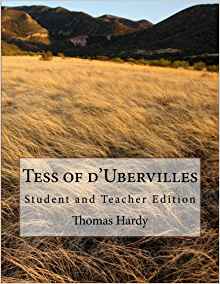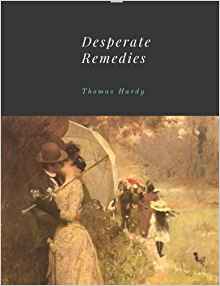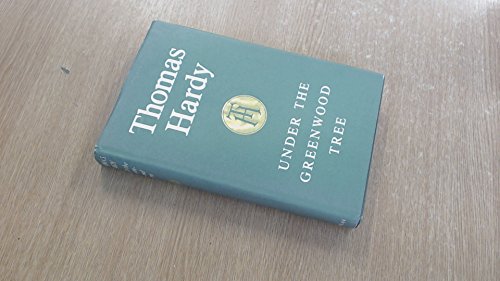Thomas Hardy
Tess of the D’Urbervilles
language
( May 10, 2015)
“Her affection for him was now the breath and life of Tess's being; it enveloped her as a photosphere, irradiated her into forgetfulness of her past sorrows, keeping back the gloomy spectres that would persist in their attempts to touch her—doubt, fear, moodiness, care, shame. She knew that they were waiting like wolves just outside the circumscribing light, but she had long spells of power to keep them in hungry subjection there.”
Tess of the D’Urbervilles: A Pure Woman Faithfully Presented was a controversial work when it first appeared in the early 1890s. The serialized version of 1891 was heavily censored and the full novel of 1892 received mixed reviews, largely because it challenged the sexual morals of late Victorian England. The book’s reputation has since grown considerably and it is now routinely cited as Thomas Hardy’s masterpiece. Roman Polanski’s 1979 film version (Tess) boosted world-wide interest in the novel and it has remained widely read now for over a century.
The richly descriptive narrative is rife with unforgettable vignettes of rural life in late 19th-century England -- the slow death of a flock of wounded pheasants, the monotony of field labor under a gunmetal gray sky, the itinerant farm worker’s seasonal round – but the story’s timeless power stems from its heart-wrenching romance and the tragic experiences – or fate, as Hardy might have put it - of the eponymous heroine.
*Includes image gallery and link to free audio recording of Tess of the D’Urbervilles.
Tess of the D’Urbervilles: A Pure Woman Faithfully Presented was a controversial work when it first appeared in the early 1890s. The serialized version of 1891 was heavily censored and the full novel of 1892 received mixed reviews, largely because it challenged the sexual morals of late Victorian England. The book’s reputation has since grown considerably and it is now routinely cited as Thomas Hardy’s masterpiece. Roman Polanski’s 1979 film version (Tess) boosted world-wide interest in the novel and it has remained widely read now for over a century.
The richly descriptive narrative is rife with unforgettable vignettes of rural life in late 19th-century England -- the slow death of a flock of wounded pheasants, the monotony of field labor under a gunmetal gray sky, the itinerant farm worker’s seasonal round – but the story’s timeless power stems from its heart-wrenching romance and the tragic experiences – or fate, as Hardy might have put it - of the eponymous heroine.
*Includes image gallery and link to free audio recording of Tess of the D’Urbervilles.
Enjoy reading Tess of the D’Urbervilles? You may also like these books
-

Thomas Hardy
Thomas Hardy Boxed Set: Tess of the D'Urbervilles, Far from the Madding Crowd, The Mayor of Casterbridge, Jude
Hardcover (Penguin Classics Aug. 1, 2019) -
L

Thomas Hardy
The Exclusive Life of Reba K. Williams, a Parakeet: Book One
Paperback (Thomas Hardy June 26, 2019) -

Thomas Hardy
Thomas Hardy - A Pair of Blue Eyes
(CreateSpace Independent Publishing Platform Dec. 13, 2016) -

Thomas Hardy
Tess of d'Ubervilles: Student and Teacher Edition
Paperback (CreateSpace Independent Publishing Platform Oct. 2, 2016) -

Thomas Hardy
Desperate Remedies
Paperback (CreateSpace Independent Publishing Platform Sept. 9, 2015) -
W

Thomas Hardy
Oxford Bookworms Library: Tales from Longpuddle: Level 2: 700-Word Vocabulary
Paperback (Oxford University Press March 15, 2008) -

Thomas Hardy
Thomas Hardy - A Laodicean: a Story of To-day
Paperback (CreateSpace Independent Publishing Platform Dec. 13, 2016) -

Thomas Hardy
Desperate Remedies by Thomas Hardy
Paperback (CreateSpace Independent Publishing Platform July 19, 2017) -

Thomas Hardy
Under the Greenwood Tree, Or, the Mellstock Quire: A Rural Painting of the Dutch School
Hardcover (Macmillan Pub Ltd Feb. 1, 2003) -

Thomas Hardy
A Laodicean; or, The Castle of the De Stancys. A Story of Today
Audio CD (Naxos and Blackstone Audio Jan. 11, 2019)









